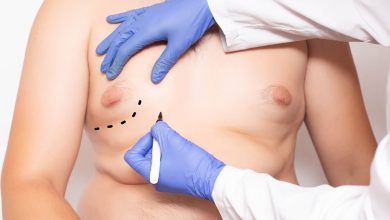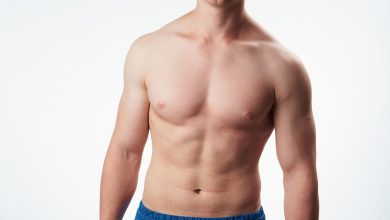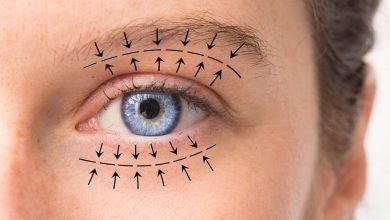What Is Fat Injection
What Is Fat Injection – Fat Grafting – Fat Transfer – Lipofilling
It is the procedure performed by taking fat cells from an area such as the hips or abdominal region with the help of very thin cannulas, processing these fat cells with decanting or centrifugation and then injecting using special blunt cannulas into the areas in the face of the same person, where they are needed.
Advantages of Fat Injection
- The risk of allergy, which is 0.3% when using ready-made fillers, is zero when using fat grafts.
- Fat injection allows for applying larger volumes compared to ready-made fillers.
- It gives fullness and volume to the application area.
- With the stem cell precursors in their contents, fat grafts improve blood circulation and have a positive effect on the tissue and skin quality.
- Although the effect of fat grafts is temporary, their duration of action is quite long compared to ready-made dermal fillers.
Application Areas for Fat Injection
- Cheekbones
- Grooves between the nasal wings and the corners of the mouth (nasolabial sulci)
- Forehead, temples and glabella (the area between the eyebrows)
- Tip and corners of the lower jaw
- Nasal ridge
- Lips
- Volumization of areas such as legs, hips, trunk or breasts
- Elimination of collapses caused by the loss of soft tissue in any area of the body.
Before Fat Injection
- Taking blood thinners such as aspirin, green tea, vitamin E and nutritional supplements should be discontinued 15 days before the operation.
- The patient has to be both physically and spiritually healthy.
How Is Fat Injection Performed?
- This surgical procedure is performed under local or general anesthesia in sterile operating room conditions.
- It is often combined with other aesthetic procedures, such as mini and lower blepharoplasty.
- For the removal of adipose tissue, an incision of 2 to 3 mm is made on the skin of the abdomen or hips.
- The desired amount of fat is obtained by vacuuming fat cells out of the donor area using special cannulas, which are 2 mm in diameter.
- It may not be possible to obtain adequate amount of adipose tissue from underweight people.
- The fat taken is injected underneath the skin of the desired area, using special blunt cannulas that leave no scars on the skin.
- Removing small amount of adipose tissue from donor areas causes no significant collapses or asymmetries there. Removing large volumes, on the other hand, enables the surgeon to both eliminate the excess fat in the donor area and obtain adequate amount of fat required for fat injection; in a sense, he/she hits two birds with one stone.
After Surgery
- In order to reduce postoperative edema, the patient should lie making sure that the application area is above the level of the heart.
- On the first day, cold compress should be applied intermittently.
- It may take 1-2 weeks for the postoperative edema to subside, depending on the amount of adipose tissue applied and the application area. When applied on the lips, the procedure causes a significant edema and it may take longer for the edema to subside.
- Especially in the first month after the operation, some portion of the injected adipose tissue melts but the rest is permanent for life. The permanence ratio varies depending on the application area, application method, and the amount of fat. Therefore, it is necessary to wait for a period of at least a month to evaluate the aesthetic result.
Potential Risk and Complications
- Bleeding, bruising
- Infection
- Asymmetry and contour differences
- Melting of fat cells more than expected and inability to achieve the required aesthetic result
- Fat embolism (a condition where oil particles passing through the veins reach organs such as the lungs and brain, causing vital complications). There is a high risk of this complication, especially in cases where high-volume fat injections are performed for butt augmentation.
Is the Effect of Fat Injection (Fat Grafting) Permanent?
Some of the injected fat cells melt due to their inability to receive adequate amount oxygen and nutritional support, while some of them can survive by adapting to their environment. The level of permanence of injected fat tissues has been reported to vary from 40 to 70%. The fat cells injected in the procedure need blood circulation to survive.
For this reason, the survival rate of fat cells is higher when a small amount is injected into areas with high blood circulation. Injecting a large amount of fat into an area does not provide any increase in a proportional sense. Instead of injecting a large amount at once, dividing the amount into two at 6-month intervals will further increase the number of surviving fat cells in that area.
On the other hand, the melting rate of fat cells is higher in mobile areas such as lips, while it is lower in immobile areas such as cheekbones.
The fat cells that survive and do not dissolve in the first 1-6 months in the area where they are injected become permanent for life.
Can Fat Injection Be Repeated?
Fat injection can be repeated at least 6 months after the first operation. In fact, since the first fat injection positively affects the blood circulation in the injection area, the amount of surviving cells is expected to increase in the second operation.
How Long Does Fat Injection (Fat Grafting) Take?
At the end of the first 6 months after the fat injection, the remaining fat cells become permanent for life.
Can Fat Grafts Be Stored and Used In the Future?
There are procedures, in which fat cells are stored frozen for future use, but the survival rates of these cells that are then reheated and used are controversial. In my own practice, I don’t store fat grafts.
What is Facial Fat Injection?
With fat injections, it is possible to provide younger and dynamic appearance by reshaping and volumizing many areas of the face, such as the forehead, temples, glabella, grooves between the wings of the nose and the corners of the mouth (nasolabial sulci), mouth corners, chin and its corners.
2024 Fat Injection (Lipofilling) Prices
Prices vary according to the application area. You can fill out the form to get more information, request an online appointment or contact us using our contact details.
Recovery Process after Fat Injection (Fat Transfer)
After the fat injection, it takes 1-2 weeks for the edema caused by the process to go away, depending on the amount of injection and the injection site. It may take a bit longer when the injection area is the lips. Some portion of the fat injected melts and gets absorbed by the body.
90% of this portion melts within the first month after the operation. Therefore, it is necessary to wait for a period of at least a month to evaluate the aesthetic result after fat injection.
Can Fat Injection (Lipofilling) Be Repeated?
There is no harm in having fat injection again when it is necessary.




